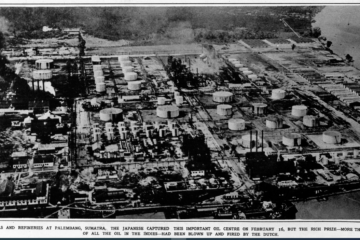Dutch Indonesian Association – Cairns
In April 1995 a small group of Indische mensen’ (people born in Indonesia), such as Rob Elstak, Eric & Rob Marcus, Leo Vandersar, Jan Schmieman and Andreas Flach, came together in Cairns and founded the ‘Dutch Indonesian. Association – Melati’ (Jasmine). Andreas Flach became the editor of the club’s newsletter `Melati’. In January 1997, Andreas moved to the Sunshine Coast and expanded the Melati club from a Cairns-based to a broader Queensland- based association while the name changed from ‘Melati’ to `Bungs Melati’ (Jasmine Flower). When a further distribution of the magazine over the whole of Australia was required, the name of the magazine changed again. It was now no longer a newsletter but had matured into an independent magazine for everyone interested in the former Dutch East Indies, which became later independent Indonesia. The first issue was published in 1997 under the new name `Bambu’, suggesting flexible strength as in `bambu buigt, maar breekt niet,’ (Bamboo bends, but does not break).
After coming to Australia, the `Indische’ migrants settled quickly and assimilated into most areas of Australian society. Like their Dutch ‘cousins’, this ethnic group quickly and industriously set about creating a worthwhile existence for themselves and their families. Overcoming the many challenges involved in this process left little time to dwell upon their ethnic background and former culture. The first generation of the `Indische’ migrants has now settled and consequently has time to reflect on the less prosaic issues of life. As they get older, these people have a natural desire to meet and converse with people of similar background and to re-connect with issues of the past. This is of course a normal aspect of the ageing process for people of all backgrounds.
One of the ways to connect to others interested in an Indische’ background is through the magazine `Bambu.’ which is not connected to any club. Bambu has now almost 300 subscribers Australia-wide and in nine other countries: New Zealand, Canada, USA, South Africa, the Netherlands, Spain, Indonesia, Malaysia and Venezuela. The bi-monthly magazine (subscription currently $15.00 p.a.) increased from a 12-page newsletter to a 44-page magazine. The aim of the magazine is “to bring together the diverse group of the Indische’ people and to increase human understanding to enrich the Australian ethnic mosaic”. This helps to maintain and rejuvenate the ethnic and cultural issues, which become increasingly important to these people as they are ageing. `Bambu’ organises activities such as: monthly coffee mornings, traditional Indonesian kite flying, car-rallies, picnics, outings and library services. These activities are extremely well received by all. The coffee mornings are the most important method to bring the Indische’ people in contact with one another. They started in February 1998 and up to 70 people have attended. The Indische’ library has over 200 books about the former Dutch East Indies and modern Indonesia. Ninette Floris does all library work.
It must be emphasised that `Bambu’, being an independent magazine, is not connected to a club, association or organisation. Volunteers do the work and organise all activitivities.
Andreas Flag, editor, September 2000
Bambu magazines are available for research from the DACC Archives
Indo (Eurasian) communities in postcolonial Indonesia
A thesis submitted by Rosalind Louise Hewett for the degree of Doctor of Philosophy of The Australian National University
March 2016
The following are abstracts from the thesis most relevant to Australia.
Page 93
Between 1945 and the late 1960s, around 200,000 Indos repatriated to the Netherlands. Of those in the Netherlands, about 60,000 later migrated to the United States. Approximately 10,000 Indisch Dutch (Dutch citizens born in the Indies) migrated to Australia. Six thousand of these migrants moved directly from Indonesia, most of them totok Dutch. The remainder departed from the Netherlands, though many others were unable to obtain visas because of Australia’s White Australia policy.
Page 106
In 1996, a group of Australian Indos held an exhibition on Dutch Indo history called The Other Dutch. Loes Westerbeek remarked that the title of the exhibition was significant: “they did not, for instance, call themselves The Other Indonesians. In their perception, this term would not have done justice to their specific Dutch European background…. It emphasised their historical ties with the Netherlands.”
Similarly, in analysing oral history interviews with Australian Indo women, Westerbeek noted that these women stressed similarities and “historical and cultural connections” with the Dutch. However, they discussed Indonesians in terms of opposition/difference, rather than similarities and connections. When these same women went back to Indonesia, they did not find the Indies that they remembered. In fact, according to one woman, “there is no place to go back to,” except in memories and stories.
Page 109
In Australia, the Indisch Dutch magazine Bambu was among the most popular in terms of readership, with 536 subscribers at its peak. Bambu was founded in 1995 by Andreas Flach, an Australian Indo who first repatriated to the Netherlands, then returned to Indonesia and subsequently lived in a number of other countries, including Ecuador and Suriname, before moving to Australia.
Bambu began as the magazine of a group of Indos who met monthly on Australia’s Sunshine Coast, but its readership soon extended beyond Queensland to elsewhere in Australia, New Zealand, the Netherlands, France, Canada, and Indonesia, with former subscribers in Malaysia and Spain as well. The magazine includes letters and articles in Dutch and English on both colonial and contemporary Indonesia, cartoons mixing Dutch and Malay, and a regular feature on Oude Indische Photo’s (old Indisch photos), reflecting the enduring influence of Tong-Tong.
More so than Moesson and De Indo, Bambu incorporates information about contemporary events in Indonesia. For example, one edition featured an article and photos about the 2013 Jakarta floods. Another recent feature included Latihan Bahasa (Indonesian language lessons). In 2001, Bambu published a special edition titled Dapur Kecil [The Little Kitchen]: Indonesian Recipes Published by Bambu, containing recipes submitted by a lecturer in Indonesian cooking at a technical college in Queensland. These recipes were listed as Indonesian and written in English, with contemporary Indonesian spelling, rather than Dutch spelling of Malay terms.
Despite dealing with modern Indonesia and being written in English, Bambu, like De Indo and Moesson, was aimed at an Indisch Dutch audience. This group had mostly remained separate from Indonesian society in the 1940s and 1950s, and after the final expulsion of Indonesian citizens in 1957, were physically removed from Indonesia. For this group, the Dutch East Indies was home, while postcolonial Indonesia was a foreign country.
Travel accounts of Indonesia in these magazines portrayed it as a holiday destination, with the journeys framed as those of tourists rather than migrants returning home. Advertisements for heritage tours catered specifically to the Indisch Dutch, featuring visits to historical areas relevant to their past rather than typical Indonesian tourist spots. One woman, writing in the December 2011 edition of De Indo, declared, “Indonesia is always in my heart and often on my mind. De INDO provides me a window to the land and the people of the past. The beauty and culture are those seen nowhere else in the world.” The past, not contemporary Indonesia, is central to how many Indos outside Indonesia choose to interact with it today.
Page 110
One Australian Indo man, Andrew Marks, described his experiences during the Japanese Occupation of Java. While working with his mother in the kitchen of a Japanese internment camp, he witnessed an Indo man being tortured and shot. His family’s thirteen-bedroom home was ransacked and rendered unliveable during the Occupation.
Andrew’s mother died in 1948. After the orphanage he and his siblings were sent to was burned down, they lived on the streets, adopting Indonesian names for their safety. They nearly starved. Andrew suffered from beriberi and experienced temporary blindness from trachoma due to a lack of food. He never returned to Indonesia, citing the trauma he experienced as too painful to revisit.

